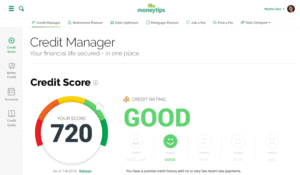 If you applied for a home loan in the current financial environment , your lender would probably assess your application in the context of both your credit score and your credit history – on top of your income, assets, liabilities and living expenses.
If you applied for a home loan in the current financial environment , your lender would probably assess your application in the context of both your credit score and your credit history – on top of your income, assets, liabilities and living expenses.
Your credit score is a number calculated by a credit-reporting agency, which compares you to other borrowers and categorises your credit risk profile. The higher your score, the lower your risk: i.e. you’re ‘less likely’ to record a default or bankruptcy on your credit file over the next 12 months.
What’s changed?
On 1 July 2018, Australia moved to a positive credit reporting system. This brings us in line with other OECD countries, and means credit providers are obliged to provide credit-reporting agencies with more information on what accounts you hold and how you’re managing them.
Previously, your credit file would only capture negative credit events: overdue debts, defaults, bankruptcies and court judgments. But the new system – also known as ‘comprehensive credit reporting’ – records your entire repayment history for each line of credit you have. This could include your:
- Mortgage
- Car/personal loan
- Credit/store cards
- Utility and telecommunications services.
The system details when you make payments on time or late, and when accounts are opened and closed. This means potential lenders have a much fuller picture of exactly what debt you hold and just how effectively you’re servicing it.
What does it all mean?
While this level of scrutiny may feel uncomfortable, it could enable you to obtain a loan for which you’d previously have been rejected. Demonstrating sustained good financial management prior to applying for credit will show up on your file and could offset a default notice from a few years ago. Also, if you’re a newer borrower or have little credit history, you should be able to establish a credit score more quickly.
What can you do?
Set up automatic payments
It’s more important than ever to make sure you don’t accidentally miss payments. With many credit providers, you can set up automatic payments as a safeguard.
Be on the front foot
If you think you may be late with a payment, get in touch with your credit provider – immediately. They may have a hardship provision that could offer you more time to pay, which could protect your credit score. See the ASIC MoneySmart website for more details on hardship provisions.
Be aware of what contributes to your credit score
Credit-reporting agencies calculate your credit score based on how much credit you have, what type of credit you have, and how you well you’re servicing it. Therefore, to improve your credit score you can:
- Close credit cards you don’t need
- Lower your credit limits (if you can maintain a low balance)
- Avoid applying for credit from less reputable lenders
- Pay all your bills on time
- Settle any defaults
- Limit new credit enquiries when applying for a home loan.
Check your credit file every year
It’s a good idea to check your credit file regularly and especially right before applying for a mortgage. If you find any errors, you should dispute them immediately with the agency or the credit provider, as credit limits or late payments can sometimes be incorrectly listed.
More disturbingly, identity theft can sometimes also occur, making it even more important that you take ownership of your credit file, check it carefully, and keep your personal documentation and identification details safe.
You can access your credit report for free each year by contacting the following credit-reporting agencies:
- Check your Credit (Illion) checkyourcredit.com.au/Personal
- Experian Australia Credit Servicesexperian.com.au/consumer-reports
- Equifax equifax.com.au
If you would like more information: Go to creditsmart.org.au
